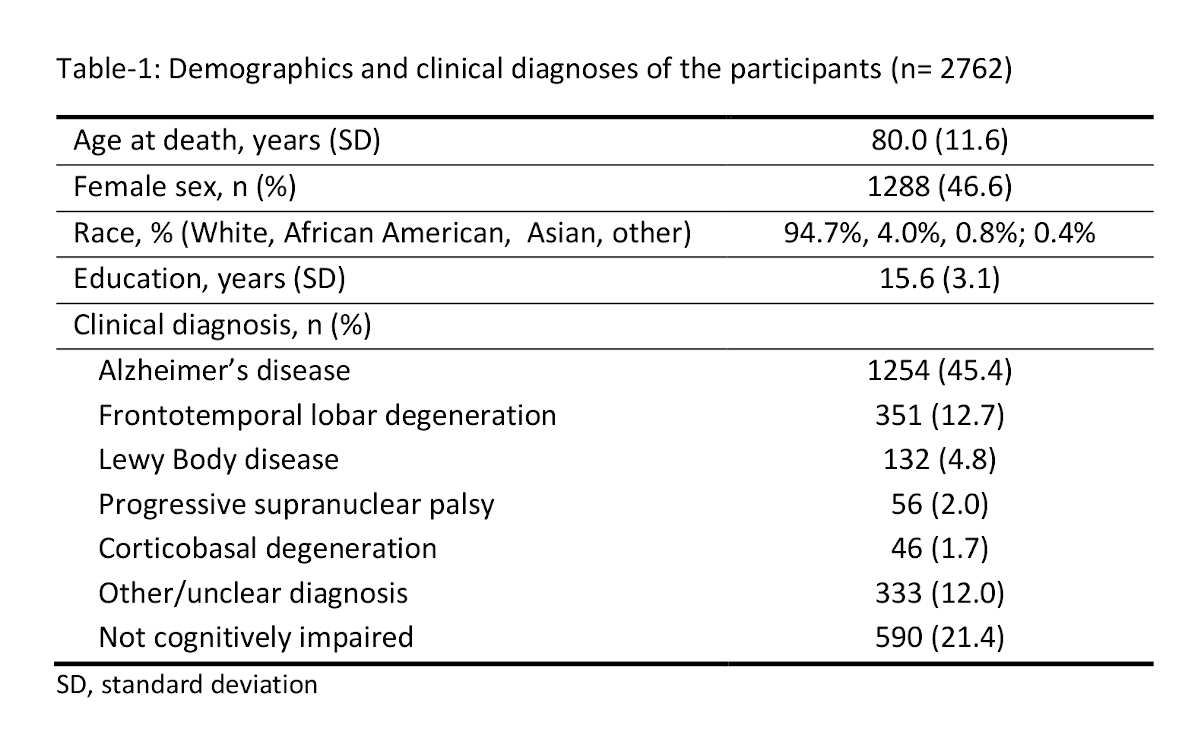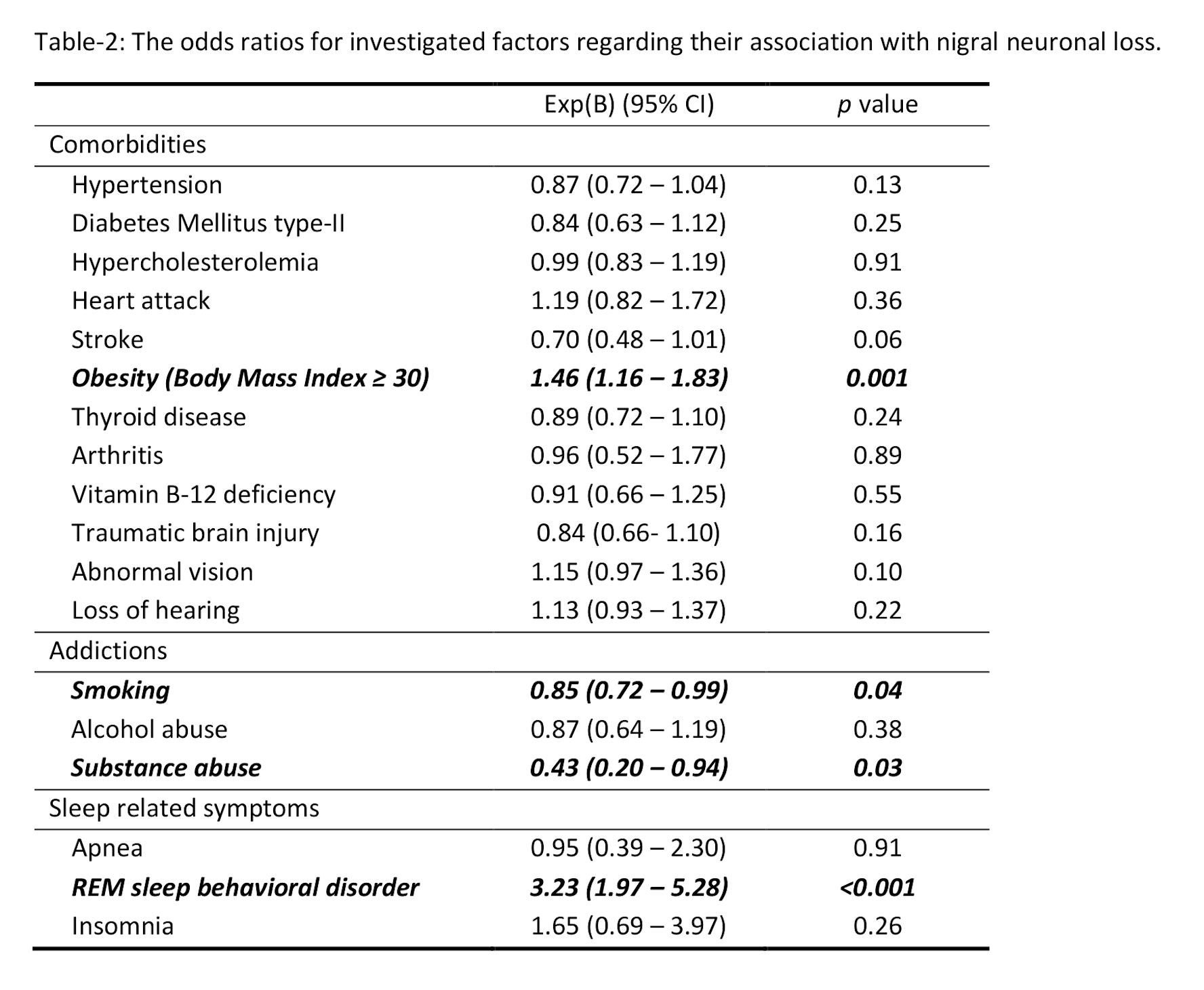Objective: To explore (additional) clinical features associated with nigral neuronal loss that could potentially be included in the criteria for prodromal Parkinson’s disease (PD).
Background: It is known that neuronal loss in the substantia nigra (SN) starts decades before the clinical symptoms allow the diagnosis of PD. It has also been reported that some clinical manifestations of PD can be detected before the diagnosis, in the so-called “prodromal stage” of PD. However, the published criteria [1] to detect individuals who are in the prodromal stage are yet to be improved with more specific markers and additional features associated with nigral degeneration [2].
Method: Clinical and autopsy data from Uniform Data Set (UDS) and Neuropathology Data Set from the National Alzheimer’s Coordinating Center including 39 past and present Alzheimer’s Disease Research Centers were used. The data included 2762 participants with UDS visits conducted between September 2005 and December 2019. Associations between the clinical parameters (patient history and clinical assessments of the first visit) and nigral neuronal loss at neuropathology were analyzed using binary logistic regressions independent from participant’s diagnosis. Nigral neuronal loss was dichotomized (no/yes) as the dependent variable and potential confounders of each assessed factor were included in the model.
Results: Demographics and clinical diagnoses are given in Table-1. [table1] Of the included, 1705 (62%) had (mild, moderate or severe) neuronal loss in the SN. The regression model for comorbidities (Nagelkerke R2= 1.4%; χ2(6)= 22.81, p= .007) correctly classified 62.3% of the cases and showed that individuals with obesity had 1.46 times higher likelihood of having nigral neuronal loss, an effect independent from vascular confounders. The model for addiction parameters (Nagelkerke R2= 0.6; χ2(6)= 12.01, p= .035) correctly classified 62% of the cases; substance abuse (mainly cannabis) was associated with 56% reduction in the probability of having a nigral neuronal loss. As expected, smoking and REM sleep behavior disorder were also associated with neuronal loss in the SN [table2].
Conclusion: Obesity (positively) and substance abuse (negatively) may be associated with dopaminergic cell loss in the SN. Contribution of these factors to PD development, and their potential as prodromal markers should be assessed in future studies.
References: 1. Heinzel S. Berg D, Gasser T. et al. Update of the MDS research criteria for prodromal Parkinson’s disease. Mov Disord. 2019 Oct;34(10):1464-1470. 2. Berg D, Postuma RB. From Prodromal to Overt Parkinson’s Disease: Towards a New Definition in the Year 2040. J Parkinsons Dis. 2018; 8(Suppl 1): S19–S23.
To cite this abstract in AMA style:
R. Yilmaz, E. Bayram, C. Akbostanci. Clinical factors associated with neuronal loss in the substantia nigra [abstract]. Mov Disord. 2020; 35 (suppl 1). https://www.mdsabstracts.org/abstract/clinical-factors-associated-with-neuronal-loss-in-the-substantia-nigra/. Accessed April 2, 2025.« Back to MDS Virtual Congress 2020
MDS Abstracts - https://www.mdsabstracts.org/abstract/clinical-factors-associated-with-neuronal-loss-in-the-substantia-nigra/


